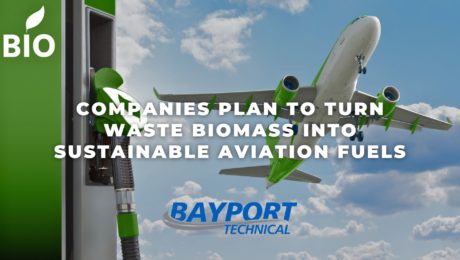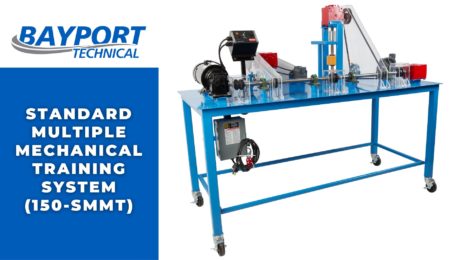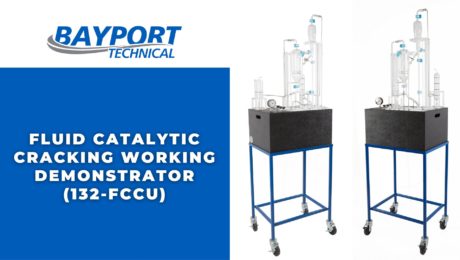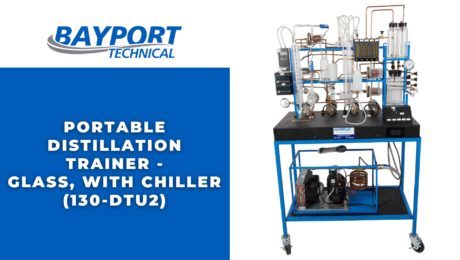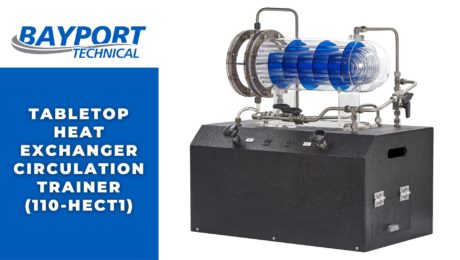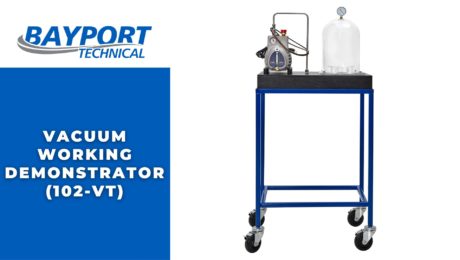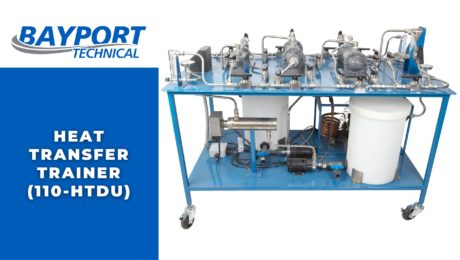Summer Heat and Hurricanes Put Pressure on Oil and Gas Companies
When summer rolls around, many Americans head to the coasts to enjoy a vacation on the beach. Over the past several years, though, millions of vacations—and everyday lives—have been interrupted by intense heat waves and powerful storms.
Some experts believe this trend is the result of global climate changes. Whatever the cause, it’s a trend that has millions of people across the country and around the world worried about what life will be like in the years to come.
Moreover, individuals aren’t the only ones affected. Oil and gas companies along coastal areas have learned to prepare and brace their facilities for the worst. According to a recent Reuters article, authors Shariq Khan and Nicole Jao predict that “[a] double whammy of record heat and hurricanes should test U.S. refiners’ resilience in coming weeks, raising the risk of extremely volatile fuel prices in the middle of the peak travel season.”
The authors point out that “[t]he Atlantic hurricane season from June through November is an annual threat for U.S. refineries. Half of the country’s over 18-million-barrel-per-day refining capacity is located along the Gulf Coast, highly susceptible to tropical storms.”
Unfortunately, “[r]efiners this year may have to brace for more storms than usual. Government forecasters expect up to seven major hurricanes in coming months, double the annual average of three major Atlantic hurricanes with wind speeds over 111 miles per hour.”
When storms are forecast to hit oil production hotspots, refiners often cut back operations dramatically, even closing refineries and shutting down ship traffic to affected ports. Mandatory evacuation orders can also impact worker availability at plants.
According to the U.S. Energy Information Administration, “If a major storm hits the Gulf Coast’s refining system, it could remove as much as a million barrels a day of fuel supply and lead to extended outages or even permanent closures.” But hurricanes aren’t the only problem oil and gas companies have to deal with currently.
Khan and Jao note that “[i]n addition to hurricanes, refineries this year must contend with more problems related to scorching heat. The latest U.S. monthly temperature outlook foresees above average temperatures in large parts of the U.S. in July, typically the hottest month. Excessive temperatures have supersized effects on commodity supply chains, including oil and fuel.”
Not only is excessive heat dangerous for workers, “[t]riple-digit temperatures could lead to equipment malfunctions and reduction in refining capacity. Extreme heat last year led to a 500,000 bpd reduction in Gulf Coast refined products output.”
There is a silver lining, however. Khan and Jao point out that “[a] robust maintenance season earlier this year allowed U.S. refineries to undertake major upgrades and perform detailed upkeep which had been repeatedly postponed due to surging post-pandemic demand and supply disruptions.”
As oil and gas companies strategize and develop plans to tackle future heat waves and hurricanes, they will continue to need highly skilled workers to conduct critical maintenance activities that will help them weather the storm (pun totally intended).
Given the ongoing skills gap across all major industries, oil and gas companies will need to focus on hiring highly skilled workers and training current workers with the skills they need to succeed. So how do oil and gas companies improve their focus on technical skills? For new and current employees, the answer is technical training.
Oil and gas workers need both fundamental knowledge and hands-on technical skills with real industrial equipment they’ll encounter on the job. Be sure to check out Bayport Technical’s wide variety of hands-on oil and gas training systems to take your oil and gas training to the next level.
- Published in News
Will Oil and Gas Workers Get Left Behind?
When you think of oil production, which countries come to mind? If you’re like many people, you may be thinking of countries throughout the Middle East, such as Saudi Arabi, Qatar, and United Arab Emirates. Would you believe, though, that one of the preeminent oil basins in the entire world is located right here in the United States?
In a recent Forbes article by Ian Palmer, the author notes that the Permian basin, which is located in southeast New Mexico and west Texas, “is the king of crude in the U.S.” Responsible for “producing over 6 MMbpd (million barrels per day),” the Permian has made New Mexico “the second highest oil-producing state in the U.S.”
Experts estimate “that crude oil from the Permian will increase 8% this year…leading to record levels of oil production in the U.S. that will approach 14 MMbpd by 2025…the highest oil production in the world.” However, Palmer points out that the oil and gas industry “predicts peak oil production in the 2030s.” After that peak, “[t]he general idea is that fossil energies would decline as renewable energies would increase.”
What’s driving these changes? (Pun totally intended.) If you guessed electric vehicles (EV), you’d be partially right. In addition to EVs, the push for renewable energy sources also comes from efforts to address climate change, as well as the fact that fossil fuel supplies are not renewable and will one day have to be replaced with alternatives.
Oil giant British Petroleum estimates “worldwide fossil energy consumption falling steadily from 80% now to 28-55% by 2050. Coal will fall the most, oil will fall, and natural gas may or may not fall.” New Environmental Protection Agency rules aimed at vehicle emissions could spur the transition to EVs, though, which could accelerate the decline in oil production.
This might seem like a problem for a state like New Mexico, but Governor Lujan Grisham has made a “strong commitment to address climate change. The state has mandated 80% of electricity to be provided by renewables by 2040, and greenhouse gas (GHG) emissions to be reduced by 45-50% based on 2005 levels.”
As the transition to renewables gains momentum, many in New Mexico are beginning to ask questions about what is to become of the state’s oil and gas workers. According to a recent article from The Wilderness Society, author Nicole Segnini notes that “the oil and gas industry hugely depends on Latinx and immigrant workers. According to New Mexico’s Bureau of Labor Statistics, Latinos represent 46% of the state’s oil and gas workforce, many of whom are immigrants.”
Segnini acknowledges that “New Mexico, and the U.S. as a whole, must transition to renewable energy. But as they make that change, they need to ensure these workers, who have played such a crucial role in the economy, are not left behind. The state must value their expertise and livelihoods as it navigates the necessary transition to a healthier, more sustainable economy.”
For many Latinos and immigrants in New Mexico, “jobs in or supporting the fossil fuel industry are among the very few available to care for their families.” Unfortunately, it’s also this same group “who bears the brunt of the industry’s challenges and pollution.”
Segnini notes that “[o]il and gas workers in Southeast New Mexico…are not sure if they’ll be replaced, if they’ll have to move or if they’ll even get a fair chance at new clean energy jobs.” In fact, “[m]any fear people from outside the state of New Mexico will get those jobs instead, leaving them without a paycheck—and without easy access to training that could help them transition into safe and quality jobs in renewable energy or other industries.”
For example, Gabriela Rueda, originally from Mexico and living in New Mexico for the last five years, says, “Our community needs funds to improve the workforce, have other developments and training with work equipment.” She and others working in the New Mexico oil and gas industry “all have one thing in common: they understand that the oil and gas industry has many flaws and could end. They just want to be considered when that happens.”
Thanks to the advocacy of Somos Un Pueblo Unido, a New Mexico immigrant and worker rights organization, the most recent New Mexico state legislative session secured “$6 million from the state’s budget for New Mexico’s adult education division to expand integrated education and skills building programs for disengaged and difficult to reach adult workers,” as well as “a $1 million pilot program to provide cash stipends to low-income workers enrolled in adult education and integrated education training program.”
Segnini concludes that “it is crucial the state…provides equitable access to workforce development and adult education programs and invests significantly in supplemental income for workers enrolled in training…Providing support, retraining opportunities and pathways to new employment sectors ensures that these workers are not left behind but rather empowered to thrive in a rapidly evolving energy landscape.”
For New Mexico and any other states navigating the transition from fossil fuels to alternative energy sources, the Amatrol family of companies can help with all your training needs. Oil and gas companies will continue to need skilled workers as oil production continues to increase over the coming decade.
As the renewable energy transition ramps up, companies will still need skilled workers. Many of the skills workers will need will be like those needed to produce traditional fossil fuels, while new skills will also need to be mastered. Amatrol, along with its sister companies, DAC Worldwide and Bayport Technical, offer a wide variety of training tools and systems to teach workers the skills they need to succeed.
For example, both DAC Worldwide and Bayport Technical manufacture oil and gas training tools and systems that teach hands-on technical skills with real industrial equipment they’ll encounter on the job. Here are a couple of samples of the types of training aids these companies produce:
- DAC Worldwide’s Extended Wellhead Assembly Cutaway (295-795E) depicts the complete assembly of components used in creating a wellhead, which are used in oil & gas production operations. The full-size, fully detailed example of a high-pressure wellhead assembly gives learners a first-hand view into a component that is found in oilfield applications worldwide.
- Bayport Technical’s Cooling Tower Working Demonstrator (142-CT2) is a scaled, acrylic replica of a forced draft cooling tower used in oil refineries and petrochemical plants. This working demonstrator allows a full view of how water is filtered through the tower to cool it off and then return it the factory. This tabletop system includes a water basin and distribution system, heater assembly, pump, fan, splash bars, air intake louvers, draft eliminators, and temperature gauges.
When it comes to teaching the skills workers need in the alternative energy sector, Amatrol provides a full array (again, pun totally intended) of solar and wind trainers. Here are a couple of examples of Amatrol’s green technology training systems:
- Amatrol’s Solar PV Troubleshooting Learning System (950-SPT1) teaches a range of solar photovoltaic (PV) operation, maintenance, and troubleshooting skills through a unique combination of eLearning curriculum and hands-on experience with real industrial solar PV components. That’s why Amatrol’s Solar PV Troubleshooting Learning System features a wide variety of industry-standard solar PV equipment to teach relevant hands-on skills, including: a mobile workstation with a combiner box, MPPT charge controller, micro inverter, grid interactive inverter, programmer, and communications gateway and hub.
- Amatrol’s Turbine Electric Hub Troubleshooting Learning System (950-TEH1) teaches learners adaptive skills for wind turbine operation, adjustment, and troubleshooting in a wide variety of situations. Turbine Electric Hub Troubleshooting training system allows learners to develop and practice component, subsystem, and system level skills. It is fully functional like a utility-scale turbine electric hub. Turbine Electric Hub Troubleshooting includes Amatrol’s unique electronic fault insertion system, which allows instructors to electronically create realistic hub problems and then track the learner’s progress in solving the problem.
Reach out to an expert training consultant with Amatrol today to get started on the path to training the next generation of workers!
- Published in News
Shale Oil Slump Takes Toll on Deepwater Port Development
If you only listen to politicians, you might think that the U.S. is utterly dependent upon foreign countries to feed its demand for fossil fuels. However, U.S. oil production continues to increase and domestic oil companies have been exporting oil to Europe and Asia for many years now.
In fact, over the course of the last decade, domestic shale oil has led the production boom. According to a recent Reuters article, author Arathy Somasekhar notes that, in the wake of the shale oil boom, “an oil pipeline company pitched an ambitious multi-billion-dollar export port off the Texas coast to ship domestic crude to buyers in Europe and Asia.”
That deepwater port, known as Sea Port Oil Terminal or SPOT, recently “became the first project to receive a license from the U.S. maritime regulator for a deepwater port that could load two supertankers, each of which can carry up to 2 million barrels of oil at a time.”
Sadly, this could be a case of too little, too late, as “multi-year regulatory delays, a loss of commercial backers and slowing U.S. shale production has left SPOT…and its three rival projects without any secured customers.”
Moreover, SPOT’s “cost has soared to about $3 billion…from an original estimate of $1.85 billion.” This has led to “[s]hale producers and traders…balking at the higher-than-expected loading fees for new projects even if they are able to fully load supertankers.”
According to Somasekhar, “[a] deepwater port allows customers to load oil directly onto a supertanker, eliminating the additional cost of loading the oil on smaller ships at shallower ports and then transferring the crude from the smaller vessels to larger ones.”
One would think more deepwater ports are needed, since there’s currently only “one U.S. offshore port – called the Louisiana Offshore Oil Port – that can fully load supertankers. However it primarily handles oil produced in the Gulf of Mexico and has few pipes that link to the top U.S. shale field, the Permian, in West Texas.”
Somasekhar notes that “SPOT’s largest target would be moving shale oil.” However, “slowing shale output gains have created uncertainty for shippers.” Moreover, “existing facilities can handle as much as another 1.5 million barrels, though port congestion could limit that number.” As a result, planned deepwater ports like SPOT find themselves in limbo right now.
Despite the current concerns, at least “three other deepwater port projects along the Texas coast…have sought U.S. approvals for offshore ports. So far, none have received licenses.” Experts believe “[b]etween the current dock capacity along the U.S. Gulf Coast, and the most aggressive production projections, it appears that one, at most two, could proceed.”
While the future of additional deepwater ports off the Texas coast remain in doubt, it’s clear that experts still expect U.S. oil production to continue to increase in years to come. This is good news for the oil and gas industry, which has been beset with a variety of challenges posed by the gaining popularity of alternative energy sources and electric vehicles.
As oil and gas companies work to adapt to new challenges, they will continue to need highly skilled workers to work in new facilities, such as planned deepwater ports. Given the ongoing skills gap across all major industries, oil and gas companies will need to focus on hiring highly skilled workers and training current workers with the skills they need to succeed.
So how do oil and gas companies improve their focus on technical skills? For new and current employees, the answer is technical training. Oil and gas workers need both fundamental knowledge and hands-on technical skills with real industrial equipment they’ll encounter on the job. Be sure to check out Bayport Technical’s wide variety of hands-on oil and gas training systems to take your oil and gas training to the next level!
- Published in News
Oil and Gas Companies Expanding Production of Alternative Fuels
We won’t be able to rely upon fossil fuels forever. That’s the message that experts have been communicating for decades now. And it’s true. Fossil fuels are non-renewable, and they will run out at some point. That’s why many oil and gas companies have made major investments into research and development targeted at developing new renewable alternative fuels.
According to a recent article in The Wall Street Journal, author Yusuf Khan reports that “[w]aste biomass made from sugar cane is set to power the next generation of sustainable aviation fuels, with a new $4 billion plant scheduled to be built in the farmlands of Louisiana.” Who’s behind this bold plan to convert sugar cane waste into fuel?
Khan notes that “[r]enewable hydrogen producer DG Fuels, energy giant BP and chemicals maker Johnson Matthey plan to produce 180 million gallons of sustainable aviation fuel, or SAF, a year in St. James Parish, Louisiana—enough for 30,000 trans-Atlantic flights annually.” The process is far from an easy one, however.
Sugar cane waste is used to create carbon monoxide, which is then “combined with blue hydrogen to create a mixture called syngas.” Syngas “can then be used to make a form of low-carbon kerosene through Johnson Matthey and BP’s proprietary technology, known as Fischer Tropsch CANS.” The resulting SAF will help aviation companies reduce their carbon footprint, since it produces substantially less carbon dioxide than traditional fuels.
Currently, “[a]viation accounts for just under 3% of global carbon emissions. As commercial jets are hard to electrify, the industry is looking at greener fuel sources to decarbonize.” Khan notes that “[j]ust over 600 million liters of SAF were produced in 2023, representing a minuscule 0.2% of global jet-fuel use… To meet net zero, some 449 billion metric tons of SAF are going to be needed by 2050.”
The Louisiana plant that will use sugar cane waste isn’t the only SAF plant on the horizon. Khan reports that “[s]everal large-scale SAF plants are also set to be built over the next few years, globally. Oil refiner Phillips 66, for example, is hoping to start producing SAF using used cooking oils this year, aiming for 800 million gallons of fuel a year from a site in California.”
As oil and gas companies pivot to producing new renewable fuel alternatives, they will continue to need highly skilled workers to work in these new facilities. Many of the skills workers will need will be similar to those needed to produce traditional fossil fuels. Given the ongoing skills gap across all major industries, oil and gas companies will need to focus on hiring highly skilled workers and training current workers with the skills they need to succeed.
So how do oil and gas companies improve their focus on technical skills? For new and current employees, the answer is technical training. Oil and gas workers need both fundamental knowledge and hands-on technical skills with real industrial equipment they’ll encounter on the job. Be sure to check out Bayport Technical’s wide variety of hands-on oil and gas training systems to take your oil and gas training to the next level!
- Published in News
Inconsistent EV Demand Boosts Traditional Fuel Vehicle Sales
Oil and gas companies across the nation and around the world are still having trouble filling open positions. Does that surprise you? With all the talk about electric vehicles (EVs) taking over, one might think that the oil and gas industry would be shrinking as manufacturers focus on battery-powered vehicles in lieu of those that still burn fossil fuels.
However, according to a recent Reuters article by Nathan Gomes, “[s]hares of legacy automakers have outpaced their electric counterparts over the last few weeks, as investors respond to company decisions to prioritize higher-margin, gas-powered models instead of pure battery vehicles.”
Gomes notes that “[e]lectric vehicle demand has slowed of late, suggesting the transition away from traditional internal combustion engine vehicles will take longer than expected,” as automobile manufacturers like Ford, General Motors, and Mercedes “have scaled back on their ambitious EV plans.”
In addition to inconsistent demand, EV manufacturers note “that manufacturing and development costs, spurred by pandemic-era supply chain disruptions, have gone up even as their sales have suffered.” Compounding problems is the fact that “[c]ompetition in the sector, especially from cheaper Chinese EV brands, has also heated up.”
The EV market is obviously evolving quickly, and no one yet knows how things are going to go. Will EVs grow in popularity, eventually replacing gas-powered vehicles? If so, how long will that transition take? It’s anyone’s guess at this point. What is clear currently is that automakers are content to continue producing popular gas-powered vehicles as EV demand ebbs and flows.
That means the oil and gas sector will continue to see high demand for traditional fossil fuels. It also means that the ongoing skills gap affecting industries in all sectors will continue to make finding highly skilled workers a top priority for oil and gas companies.
To both attract and retain skilled workers in a tight labor market, oil and gas companies need to prioritize training. Unfortunately, the people tasked with making sure workers possess the skills they need often don’t feel confident in their abilities to institute a quality training program. What they need is an industry partner that can supply them with the knowledge and tools they need to train workers quickly and effectively.
Bayport Technical has been partnering with oil and gas companies for many years to provide the tools they need to be successful. Be sure to check out Bayport Technical’s wide variety of hands-on oil and gas training systems that feature the real-world components today’s oil and gas workers will encounter in the field!
- Published in News
Mechanical Skills Essential for Industrial Maintenance Technicians
Is there anything more glamorous than the life of an industrial maintenance technician? Overheating motors, cavitating pumps, misaligned shafts, worn belts, and seized bearings represent just a few of the common mechanical issues a technician might encounter daily.
Knowing how to fix these issues and, perhaps more importantly, how to conduct preventive maintenance to avoid these issues altogether remain two of the most important qualities of a highly skilled industrial maintenance technician.
Indeed, routine and preventive mechanical maintenance goes a long way toward ensuring that an industrial facility operates at peak efficiency. Maintenance technicians must possess a wide variety of basic mechanical skills, including the ability to operate, maintain, troubleshoot, and repair a broad range of equipment, such as pumps, engines, turbines, AC and DC motors, bearings, couplings, and belt and chain drives.
How do you ensure that your technicians have the skills they need? Fortunately, you don’t have to be an expert on training to see that your workers learn the knowledge and skills they need to keep your facility running efficiently and effectively. Trust the experts at Bayport Technical to provide the training tools you need.
Bayport Technical’s Standard Multiple Mechanical Training System (150-SMMT) provides maintenance and operations personnel with hands-on experience with a variety of common mechanical components. Using one comprehensive training unit, workers can practice a full range of essential skills related to common situations they’ll encounter in the industrial workplace.
For example, the Standard Multiple Mechanical Training System teaches mechanical skills related to vertical and horizontal shaft alignment, gear drives, belt drives, chain drives, electric motors, pump maintenance, and lock-out/tag-out training.
Users will gain hands-on experience with a wide variety of industry-standard equipment and components, including: a variable speed DC motor, centrifugal pump, vertical shaft alignment tower, belt drive, chain drive, gear reducer, right angle drives, pillow blocks, and multiple types of bearings and couplings.
Visit Bayport Technical’s website to learn more about the Standard Multiple Mechanical Training System, as well as the wide variety of other technical training products available.
- Published in News
Fluid Catalytic Cracking Helps Refineries Maximize Profitability
Have you ever wondered where the gasoline that powers your car comes from? Gasoline doesn’t occur naturally, like water from an underground spring. Instead, it starts out as crude oil that must be refined to produce the fuel that powers engines around the world.
Large oil refineries convert crude oil into gasoline, but that’s not all they do. Crude oil comes in a variety of types and qualities, and refineries must use a variety of processes to maximize the products they’re able to extract. In addition to gasoline, refineries produce many other types of petroleum products.
Refining is a complex process that breaks down crude oil into multiple component substances. Those components can then be subjected to other processes to create different products. The more complex a refinery is, the more secondary conversion capability it will possess.
For example, one of the most important secondary conversion processes is known as fluid catalytic cracking (FCC). Unlike physical separation processes, FCC is a chemical process that takes place in a fluid catalytic cracking unit (FCCU) (also known as a Cat Cracker).
FCC breaks down large hydrocarbon molecules into smaller molecules by exposing them to extreme heat, low pressure, and a solid, sand-like catalyst, such as bauxite, silica-alumina, zeolite, or aluminum hydrosilicate. The resulting effluent then gets processed in a fractionator to separate it into intermediate products.
The FCC process allows a refinery to maximize the amount of gasoline that can be refined from each barrel of oil. This also maximizes profitability, since the FCC process is efficient, uses less heat, and produces reliable results.
The FCC process can convert vacuum gas oils, straight run atmospheric gas oil, atmospheric residues, as well as heavy stocks left over from other processes. In addition to gasoline, the FCC process can create a variety of other petroleum products, such as liquefied petroleum gas, butane, light gas oil, heavy gas oil, and clarified slurry oil.
A Cat Cracker consists of three essential pieces: the reactor, the regenerator, and the fractionator. The reactor primarily functions as a separator, directing spent catalyst to the regenerator and cracked products to the fractionator.
In the regenerator, spent catalyst is regenerated by removing coke deposits with high temperature air. The fractionator is a distillation column that separates the cracked product into different petroleum products based upon boiling point. Leftover product, called cycle oil, gets recycled back to the beginning of the process where it is mixed with fresh feed and catalyst.
Bayport Technical’s Fluid Catalytic Cracking Working Demonstrator (132-FCCU) is a training aid that teaches users the basics of the fluid catalytic cracking process. The unit consists of a reactor, generator, standpipes, risers, and an air blower that forms the catalyst circulation system.
The catalyst flow is controlled by the valves on the reactor and regenerator standpipes. Circulation fluidizing of the catalyst is achieved by injecting air into the air inlet of the regenerator, the steam inlet of the stripper, and the feed inlet to the reactor riser.
It is controlled by three individual needle valves. Evaluations of start-up, operation, and shut down procedures in these units can be invaluable to educators, as demonstrations of catastrophic events may be safely simulated. Visit Bayport Technical’s website to learn more about the Fluid Catalytic Cracking Working Demonstrator, as well as the wide variety of other technical training products available.
- Published in News
Bayport Technical’s Distillation Trainer Provides Insight into Key Industrial Process
Oil and gas industry operators and technicians must possess knowledge and skills related to a variety of industrial processes. One of the most common processes used in these industries is distillation, which separates mixtures based upon the different conditions required for phase change of the mixture’s components.
Oil refineries use distillation to process crude oil into a wide array of different products. For example, crude oil can be distilled into component products, such as naphtha, kerosene, and gas oil, based upon the differences in their boiling points.
At oil and gas facilities, industrial distillation takes place in a distillation tower or column. Although the process can be quite complex as it is customized for each particular application, the essential underlying process involves heating a mixture, such as crude oil, to force its components parts, each of which has a different boiling point, into the gas phase.
As the gas vapor rises in the distillation tower or column, it eventually condenses back into a liquid and collects, either for final use or further refinement to increase its purity. In addition to crude oil, distillation is also commonly used for a wide variety of other applications, such as alcohol production, creation of liquefied gases, desalination, and chemical manufacturing.
Bayport Technical’s Portable Distillation Trainer – Glass, with Chiller (130-DTU2) enables distillation operations personnel and maintenance technicians to visualize what occurs inside the distillation towers/columns that dominate the landscape in a petroleum refinery or petrochemical plant.
More importantly, this trainer relies solely on the actions of the operator or technician to operate. Without automatic controls, the trainer forces users to quickly develop their own knowledge and skills. Fortunately, the glass fractionating column allows operators to see the results of their actions very quickly.
The Portable Distillation Trainer – Glass, with Chiller provides hands-on experience with a wide variety of real industrial equipment, including: a main column with perforated trays, four centrifugal pumps, overhead condensers, heat exchangers, a cooling system, a reboiler, temperature gauges, flow control/indicating rotameters, panel mount thermometers, a digital manometer, a charge tank, rundown tanks, and piping.
Together, this equipment provides instructors with a working model of the equipment used in refineries or petrochemical plants and accurately demonstrates distillation on a small scale. The trainer comes with a carrying case, which also acts as a stand for the unit.
The Portable Distillation Trainer – Glass, with Chiller can be used to teach everything from how to draw P&IDs to the actual operation of a distillation column. The unit is extremely flexible and forgiving. For example, instructors can demonstrate different flooding scenarios and the trainer will recover in just a few minutes. Moreover, comprehension of distillation principles is greatly improved by seeing the color graduation of the components across the column.
Visit Bayport Technical’s website to learn more about the Portable Distillation Trainer – Glass, with Chiller, as well as the wide variety of other technical training products available.
- Published in News
Oil and Gas Industry Must Address Methane Emissions
It’s no secret that climate change scientists have laid much of the blame for global warming at the feet of fossil fuels and the oil and gas industry. Now, new EPA rules could impact the oil and gas industry as proposed regulations take aim at reducing methane emissions.
According to a recent Associated Press article by Matthew Daly, “[t]he Environmental Protection Agency said the rule will sharply reduce methane and other harmful air pollutants generated by the oil and gas industry, promote use of cutting-edge methane detection technologies and deliver significant public health benefits in the form of reduced hospital visits, lost school days and even deaths.”
The authors note that “[o]il and gas operations are the largest industrial source of methane, the main component in natural gas and far more potent than carbon dioxide in the short term. It is responsible for about one-third of planet-warming greenhouse gas emissions.”
While the world’s largest oil and gas companies have already pledged to reduce methane emissions, smaller oil and gas companies should be aware that “[t]he methane rule…targets emissions from existing oil and gas wells nationwide, rather than focusing only on new wells, as previous EPA regulations have done.”
The new methane rule “also regulates smaller wells that will be required to find and plug methane leaks. Such wells currently are subject to an initial inspection but are rarely checked again for leaks.” Why target these smaller wells? “Studies have found that smaller wells produce just 6% of the nation’s oil and gas but account for up to half the methane emissions from well sites.”
What does this mean for a wide variety of oil and gas companies? They will need to invest money, time, and effort “to plug orphaned wells” and “patch leaky pipes.” This shines a light on the need for ongoing maintenance in the oil and gas sector. To get the job done correctly, these companies will also need highly skilled workers with hands-on experience with real equipment.
So how do oil and gas companies improve their focus on technical skills? For new and current employees, the answer is technical training. Oil and gas workers need both fundamental knowledge and hands-on technical skills with real industrial equipment they’ll encounter on the job. Be sure to check out Bayport Technical’s wide variety of hands-on oil and gas training systems to take your oil and gas training to the next level!
- Published in News
Bayport Technical’s Tabletop Trainer Gives Users an Introduction to Heat Exchangers
A wide variety of industrial processes require the transfer of heat from one fluid (liquid or gas) to another. Most mechanical and chemical systems use heat exchangers to accomplish this task. In a heat exchanger, the two fluids do not make direct contact. Instead, heat passes from the hotter fluid to the metal isolating the fluids and then to the cooler fluid.
Common industrial applications that utilize heat exchangers for heat transfer include heating, ventilation, and air conditioning (HVAC) systems; preheaters or coolers in fluid systems; radiators on internal combustion engines; and boilers, evaporators, and condensers used with fluids like oils, wastewater, hydrocarbons, biogases, etc. in industries such as oil and gas refining and power generation.
Given the range of applications, you’ll find heat exchangers in many different shapes, sizes, and designs. The most common and basic type is the shell and tube heat exchanger, which consists of a set of tubes inside a cylindrical shell. Fluids flow inside the tubes (tube-side fluids) and outside the tubes (shell-side fluids) and remain separated at the ends of the tubes by the tube sheets.
U-tube type heat exchangers are one of the most popular types of shell and tube heat exchangers. In a u-tube type heat exchanger, the tube bundle consists of continuous tubes bent into a “U” shape and secured to the shell by a tube sheet. The shape of the tubes directs fluid flow back and forth across the length of the heat exchanger, creating an inherent multi-pass design.
Because the bend side of the tubes is free floating in the shell, this design allows thermal expansion to occur without requiring expansion joints, meaning these types of heat exchangers can accommodate greater temperature differences than other designs.
Bayport Technical’s Tabletop Heat Exchanger Circulation Trainer (110-HECT1) features a hands-on circulation system designed to teach basic heat transfer knowledge. In addition to following the flow of two different colored fluids through the acrylic heat exchanger shell and tubes, this transparent training tool allows the user to completely dismantle and reassemble the unit in the classroom to see what each component looks like and how the gaskets are positioned.
The convenient, compact size of the Tabletop Heat Exchanger Circulation Trainer allows for ease of transportation between classrooms or use in multiple locations. The unit also features stainless steel valves for greater longevity and industrial realism.
Visit Bayport Technical’s website to learn more about the U-Tube Heat Exchanger Circulation Trainer with Backwash, as well as the wide variety of other technical training products available.
- Published in News
Training Shouldn’t Take Place in a Vacuum…Except in this Case!
What do you think of when you hear the word “vacuum?” For most, the household tool you use to clean the carpets might spring to mind. In the modern industrial workplace, however, vacuum technology plays an essential role in many industries and takes many different forms.
For example, industrial robots programmed to pick and place objects often use vacuum cup grippers combined with pneumatic power to accomplish their tasks. Other high-tech industries, such as those that deal with cryogenic substances, make use of vacuum insulated pipes and containers.
Vacuum pumps can be a critical component of extracting liquids and gases. Of course, vacuum systems that operate much like the common household vacuum cleaner are also important in industries that need them to keep pristine workspaces free of dust and contaminants.
So, what is a vacuum? Many people believe a vacuum means the total absence of air within a sealed container. Scientifically, however, a vacuum exists any time the pressure inside a closed volume is less than the local atmospheric pressure.
It is almost impossible to remove every air molecule from any container, so a so-called “perfect” vacuum can never really be achieved. There are, however, different ranges of vacuum forces that can be obtained as more air is removed and the pressure differential increases.
The range of vacuum forces varies from rough (coarse) to middle (fine) and finally to high. Most industrial vacuum systems need only rough (coarse) vacuum force for basic lifting and workholding applications, since it’s cheaper to increase force by increasing the amount of contact area with a vacuum cup than it is to create a higher vacuum force.
Some applications require higher vacuum forces, though. For example, middle (fine) vacuum force is needed for various process applications, such as coating, degassing, freeze drying, and molecular distillation; and advanced laboratory instruments, like particle accelerators, mass spectrometers, and electron microscopes, use high vacuums.
Many industrial systems utilize vacuum forces, so it’s important to understand how vacuums are created and measured, including how changes in atmospheric pressure can impact vacuum systems. For example, atmospheric pressure variations can greatly impact the boiling temperature of water.
At sea level (normal atmospheric pressure), water boils at 100°C. However, ascend to the top of a mountain where atmospheric pressure is greatly reduced, and water will boil at about 75°C. Inside a vacuum chamber where there is very little pressure, water can boil at near room temperature (20°C).
Bayport Technical’s Vacuum Working Demonstrator (102-VT) is an acrylic model that clearly demonstrates the effect of atmospheric pressure variations on fluids and gases. Learners using the Vacuum Working Demonstrator will gain hands-on experience with a vacuum pump and vacuum gauge to measure the pressure inside a clear acrylic domed vacuum chamber, preparing them to work with a variety of industrial systems that utilize vacuum forces.
Visit Bayport Technical’s website to learn more about the Heat Transfer Trainer, as well as the wide variety of other technical training products available.
- Published in News
Bayport Technical’s Trainer Provides Hands-On Experience with Four Types of Heat Exchangers
A wide variety of industries use processes that require the transfer of heat from one fluid (liquid or gas) to another, and most of those systems use heat exchangers to accomplish this task. In a heat exchanger, the two fluids do not make direct contact. Instead, heat passes from the hotter fluid to the metal isolating the fluids and then to the cooler fluid.
You can find heat exchangers in all sorts of industrial applications, such as heating, ventilation, and air conditioning (HVAC) systems; preheaters or coolers in fluid systems; radiators on internal combustion engines; and boilers, evaporators, and condensers used with fluids like oils, wastewater, hydrocarbons, biogases, etc. in industries such as oil and gas refining and power generation.
Heat exchangers come in a wide variety of shapes, sizes, and designs. The most common and basic type is the tube and shell heat exchanger, which consists of a set of tubes inside a cylindrical shell. Fluids flow inside the tubes (tube-side fluids) and outside the tubes (shell-side fluids) and remain separated at the ends of the tubes by the tube sheets.
Another common type is the plate heat exchanger, which uses metal plates to transfer heat between the fluids. Plate heat exchangers are popular in applications that require heat transfer to occur as quickly as possible, because fluids get spread out over a larger surface area when they flow over the plates.
Bayport Technical’s Heat Transfer Trainer (110-HTDU) provides valuable hands-on experience with four different types of heat exchangers: brazed plate, brass single pass tube and shell, stainless steel single pass tube and shell, and four pass tube and shell.
The Heat Transfer Trainer features a wide variety of real industrial components, including: two pumps for hot and cold fluid, manifolded with valving; a water heater with storage tank; a refrigerant-type water chiller with storage tank; flow meters and controllers; and digital thermometers.
Visit Bayport Technical’s website to learn more about the Heat Transfer Trainer, as well as the wide variety of other technical training products available.
- Published in News
- 1
- 2




